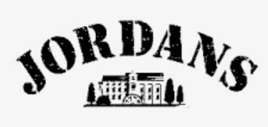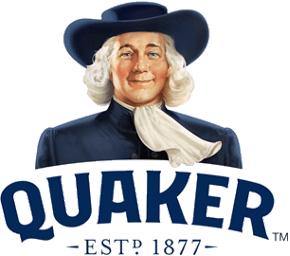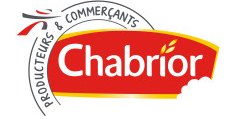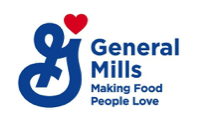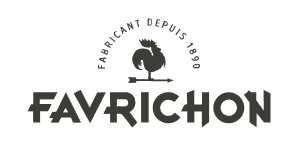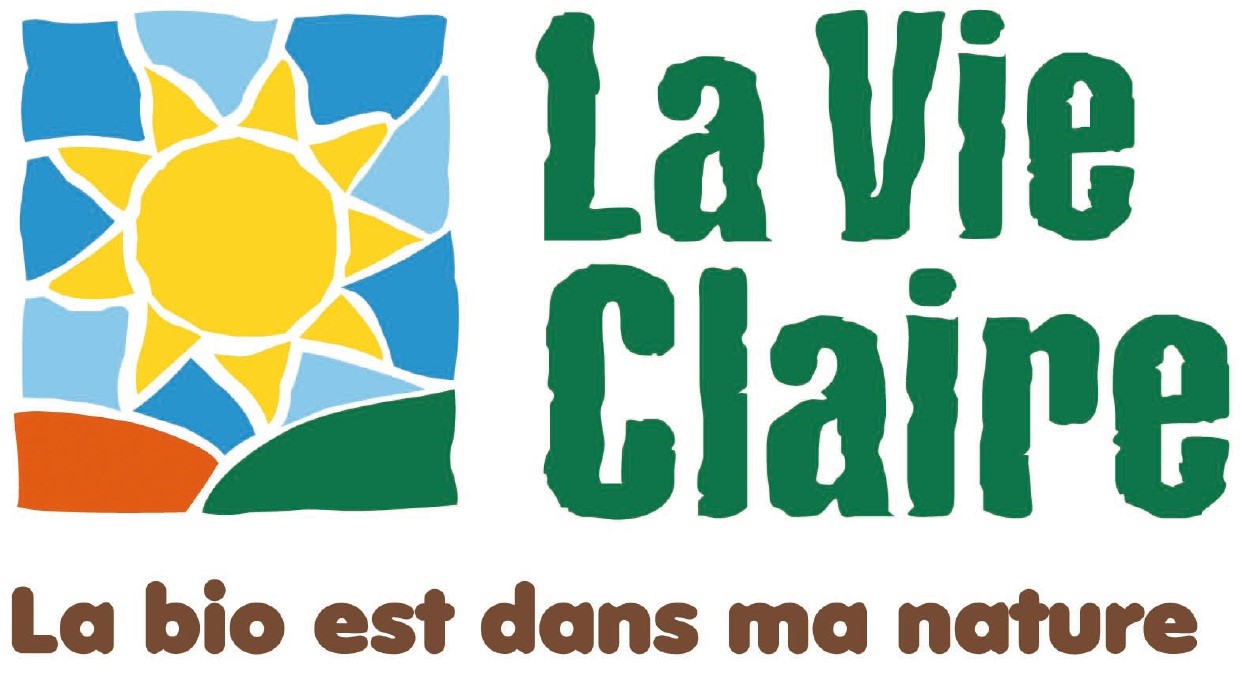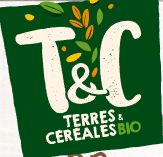Synthèse
Since 2020, the breakfast cereal market has shown signs of significant growth and transition, projecting a 6.5% CAGR through to 2027. The sector is characterized by substantial innovation, an increasing inclination towards organic ingredients, and a shift toward ready-to-eat products. Emerging economies contribute prominently to this upward trend, driven by demographic changes and the adoption of Western dietary habits. In France, sales stabilized in 2022 following an 8% volume drop in 2021, with a notable 7.2% increase in value.
Despite a stable cereal production environment, the French breakfast cereals market remains highly concentrated with Kellogg's and Nestlé leading, holding a combined market share of 65%. International trade for France shows a consistent trade deficit for processed cereals but maintains strong trade relations with countries like Belgium, Spain, and Germany. The market is evolving with niche demands and increasing online presence alongside traditional in-store retail.
Navigating the Evolving French Breakfast Cereal Landscape: Demand, Trends, and Health Consciousness
In the midst of shifting consumer preferences and health trends, the French breakfast cereal market has experienced a remarkable transformation. While the traditional allure of cereals as a convenient breakfast choice remains strong, the market structure reflects a nuanced and evolving demand pattern that places health at the forefront of consumer choices. The market size for breakfast cereals in France holds a value estimated at between 750 and 800 million euros, indicating a robust sector marked by a value growth of approximately 7.2% in recent years. Evidently, economic factors such as inflation have influenced purchasing patterns, prompting an inclination towards value-based decisions, but the appeal for healthy and organic options has not waned.
French consumers, particularly those above the age of 65, continue to affirm their dedication to breakfast as a daily ritual, with over 90% partaking in the meal daily. However, among the working population, nearly 90% disclose consuming breakfast, with a majority doing so in the comfort of their homes. Interestingly, only about 32% of these breakfasts include cereals. When it comes to schoolchildren, nearly 80% maintain a daily breakfast habit, with a focus on fullness and nutritional balance. Diving into specific consumption habits, the prevalence of cereal intake significantly varies across age groups. Youngsters aged 11 to 17 demonstrate the highest rate of consumption at around 45 to 50%, markedly more than adults aged 18 to 79, who have a consumption rate barely surpassing 15%. This insight is reflective of a market where choices are influenced significantly by age, aligning with taste profiles and nutritional priorities segmented by consumer demographics.
The French cereal market has also been subject to increasing scrutiny over healthfulness, with concerns over sugar content and processing levels steering some consumers towards alternatives like quality fresh bread. Consequently, volumes of children's cereals have seen a dip, prompting brands to enhance their offerings with better nutritional profiles, as evidenced by a growing prominence of the Nutri-score on packaging—a system well-recognized and valued by French consumers, with over 75% opting for products with superior nutritional ratings. Aligned with health consciousness, the organic segment has burgeoned, now accounting for around 20% of the market by value. This appetite for "better-for-you" options has given rise to a plethora of organic and local cereal brands, diluting the erstwhile dominance of mainstay players like Kellogg's and Nestlé.
The Breakfast Cereal Titans: Kellogg's and Nestlé Lead the Market with a Plethora of Beloved Brands
When it comes to breakfast cereals, two key players have consistently claimed a sizeable share of the market with their multitude of popular brands - Kellogg's and Nestlé. These giants have not only shaped our morning routines but also impacted global food trends with their innovative offerings and marketing strategies.
- Kellogg's: A Legacy of Breakfast Innovation - Kellogg's stands as a trailblazer in the breakfast cereal industry with a hefty 40% market share, showcasing a diverse portfolio of brands that cater to various tastes and dietary preferences. Among their celebrated brands are All Bran, known for high fiber content, and Coco Pops, beloved by children and those young at heart for its chocolatey goodness. Other household names under their wing include Extra, Frosties, Honey Pops, Rice Krispies, Smacks, and the nutrition-focused Special K. Kellogg's also adeptly captures chocolate enthusiasts with Trésor and caters to traditionalists with their time-honored Kellogg's Corn Flakes.
- Nestlé: A Global Powerhouse in Cereals - Nestlé, in collaboration with General Mills Inc., has formed Cereal Partners Worldwide (CPW S.A.), a powerhouse serving the global market, excluding the USA and Canada, where their presence is similarly felt through various subsidiaries and brands. With a market share comprising a quarter of the cereal market, they've carved a substantial niche for themselves. They boast a lineup including Lion cereals for those craving a decadent start to their day and Fitness for health-conscious consumers. The playful Nesquik and the family-favorite Cheerios balance taste with wholesomeness, while Chocapic, NAT, Golden Grahams, Nestlé Cookie Crips, and Crunch offer distinctive flavors and textures to start the morning right.
Emerging Organic and Healthy Market Entrants :
- While Kellogg's and Nestlé remain dominant, the landscape of breakfast cereals is seeing an increasing presence from niche players offering organic and healthy alternatives. These brands, including Piboom, Bonneterre, Favrichon, Céréco, Bjorg, along with newcomers like Hoope and Funky Veggie, reflect a growing consumer trend towards more health-conscious choices, organic ingredients, and environmentally-friendly practices.
- Private Labels and Diversity in Offerings - Not to be overlooked are private labels, which have been diversifying their offerings to provide cost-effective alternatives.
à la compréhension de ce marché
Détail du contenu
 Informations
Informations
- Nombre de pages : 30 pages
- Format : Version digitale et PDF
- Dernière mise à jour : 22/11/2023
 Sommaire et extraits
Sommaire et extraits
1 Market overview
1.1 Definition and presentation
Breakfast cereals are an agglomeration of nutrients, mainly cereals such as wheat, oats or corn, with natural or artificial flavors and sugar.
There are two types of cereal:
- Ready-to-eat cereals are the most common: they include wheat-based cereals, children's cereals, cornflakes and mueslis;
- Ready-to-prepare cereals : mainly oat-based cereals such as porridge.
The breakfast cereals market comprises two distinct types of cereal: adult cereals and children's cereals. Each segment has a different underlying dynamic. Indeed, a health aspect is strongly attached to the children's cereal segment, while a dietary and taste aspect is particularly important in the adult market.
In 2023, the global breakfast cereal market is estimated at US$72 billion, with average growth forecast at 6.5% to 2027. The United States holds a dominant position in this market.
After experiencingan 8% decline in volume in 2021, the French cereals market, favoragedby the Covid period, returned to stability in 2022. Moreover, in 2022, France's trade balance showed a deficit of 50 million euros, marking a deterioration of 12 million euros on the previous year. France's main economic partners in this sector are Belgium, Spain, Germany and Italy .
Numerous players have emerged in recent years, with a gradual fragmentation of the market. These players rely on a demand for niche products such as organic, local products or products perceived as healthy by consumers, such as granola or muesli. This niche demand became particularly acute in 2020 with the pandemic and subsequent confinements, as many French people changed their consumption habits and turned to healthier, more balanced products: to organic products. As a result, the main players in the market have recognized this new trend and are increasingly changing their recipes to achieve Nutri-scores of type A or B.
1.2 Steady global growth
Global sales of the breakfast cereals market will amount to $**.* billion in ****, rising to an estimated $** billion in ****. Industry experts anticipate an annual CAGR of *.*% for the period ****-****, to reach ** billion in ****.
Breakfast cereals market value World, ****-****, $ billion Source : The business research company Market trends :
Product innovation: Continued flavor ...
1.3 The French market has seen some growth in value terms in recent years
With estimated sales of *** million euros in ****, the cereals market is set to grow by nearly *.*% in **** in value and *.*% in volume [***]
Breakfast cereals market sales France, ****-***** CAGR (***): +*.*% CAGR (***): +*.*% Source: ****
After declining by *% in volume in ****, the cereals market in France,boosted by the Covid period, returns to stability in ...
1.4 International trade: a slight rise in imports and exports
Foreign trade France, ****-****, in millions of US$ Source: ****
The code used for this section may include more than just breakfast cereals. It is code ****: Cereal products obtained by puffing or roasting (***), pre-cooked or otherwise prepared.
In ****, the French trade balance for code **** showed a deficit of ** million euros. It should ...
2 Demand analysis
2.1 Breakfast demand remains strong in France
Daily breakfast consumption declines with age between * and **. However, this trend seems to reverse after a certain age, with **% of people aged ** and over declaring that they eat breakfast every day.
Breakfast every day France, ****, in
a **** survey conducted by Ifop for the Lavazza brand highlights the breakfast and lunch consumption ...
2.2 Cereal consumption habits vary widely according to consumer age
Cereal consumption among children in ****
In ****, the largest proportion of cereal consumers were children aged ** to **, who accounted for **.*%, with an average consumption of **.* g/d, while children aged * to ** represented **%, with an average consumption of **.* g/d.
Average distribution of daily consumption by place of consumption France, ****, in Source: ****
Overall, ...
2.3 Breakfast: Substitutable demand
the [***] article highlights the positive trend in the breakfast sector in France, highlighting a *-point recovery in penetration, largely attributed to teleworking and periods of confinement linked to the Covid-** pandemic. The main challenges facing industry players include the need to continue innovating to win over consumers, to improve recipes and ...
2.4 Trend: organic and healthy products are growing exponentially
Health concerns shape new eating habits
French dietary trends France, ****, percentage Source: ****
the French are increasingly aiming for a healthy, balanced diet, for a variety of reasons (***). In fact, according to the graph above, **% of those questioned say that eating a healthy, balanced diet is a major concern, and **% would like ...
2.5 France's favourite breakfast cereal brands
The graph below shows the favorite breakfast cereal brands of the French. The percentages represent the positive responses to the question "Do you like this brand?" for each cookie brand.
Kellogg's is the favorite cereal brand of the French, with almost **% saying they like it. Frosties is the least popular cereal ...
3 Market structure
3.1 Market value chain and distribution
How cereals are made :
Source: ****
Breakfast cereals are made from cereals, often wheat or rice, produced in France or imported from abroad.
The petals
After the first cooking, the petals are cooked again, in a circuit of hot air to remove all traces of moisture. Once cooled, they are flattened by ...
3.2 Stable cereal production, but with an increase in organic production
Stable grain production
NAF code **.**B : "Other grain processing activities" includes the production of groats, meal or pellets, wheat or other cereals, as well as the production of husked, milled or processed rice.it also includes the production of husked, milled or processed rice, but above all the manufacture of puffed, ...
3.3 Main brands on the market
Breakdown of the breakfast cereals market by value France, ****, in percent Source: ****
The breakfast cereal market is dominated by * main players: Kellogg's with **% of market share in ****, followed by Nestlé with a quarter of market share. Two other players also stand out: Jordans and Quaker. between them, these * players accounted for ...
4 Offer analysis
4.1 Cereal composition and typology
Average cereal composition
Source: ****
The different cereals
We saw in *.* that there are different types of cereal: petals, puffs, bursts and extruded products. There are also mueslis and granolas. Mueslis are a mixture of uncooked cereals, mainly oat flakes, with fruit.mueslis are often eaten with milk and/or yoghurt; granolas, ...
4.2 Grain prices
in **** (***), consumer breakfast prices rose by **.*% in less than * year .
This increase is mainly attributed to the war in Ukraine, which has led to higher manufacturing costs for packaging, due to Ukraine's crucial role in European production. In addition, soaring energy costs and difficulties in sourcing rawmaterials led to a sharp ...
4.3 Nutri-score: a major challenge for cereals, is organic a solution?
Nutri-score: a decisive factor
The availability of the Nutri-score in France, along with product comparison apps such as Yuka, is playing a further role in raising consumer awareness of the low nutritional value of breakfast cereals.
Most organic brands have adopted the Nutri-score, with scores between A and B for the ...
4.4 More trends and innovations to challenge the market
Eco-packaging:
Packaging is a factor that enables a brand to stand out from the crowd. In fact, eco-packaging helps to attract customers who are concerned about their waste production, especially as most cereals are packaged in a plastic bag that, a priori, cannot be recycled.
French organic cereal brand Snooz offers ...
5 Regulations
5.1 World Customs Nomenclature and Harmonized System
The Harmonized System is an international nomenclature for product classification. It enables participating countries to classify traded goods on a common basis for customs purposes. At international level, the Harmonized System (***) for the classification of goods is a six-digit code system. [***]
The HS comprises around *,*** item/product descriptions, which appear as ...
5.2 Organic label and nutri-score
For a brand to obtain the organic label on one of its products, it must meet the following conditions:
at least **% of the product's components come from organic farming in accordance with EU regulations; The product complies with the rules of the official inspection system; The product comes directly from the ...
 Liste des graphiques
Liste des graphiques
- Valeur du marché des céréales de petit déjeuner
- Chiffre d'affaires du marché des céréales de petit déjeuner
- Commerce extérieur
- Principaux pays destinataires des exportations
- Principaux pays d'origine des importations
Toutes nos études sont disponible en ligne et en PDF
Nous vous proposons de consulter un exemple de notre travail d'étude sur un autre marché !
Dernières actualités
Entreprises citées dans cette étude
Cette étude contient un panorama complet des entreprises du marché avec les derniers chiffres et actualités de chaque entreprise :
 Choisir cette étude c'est :
Choisir cette étude c'est :
Accéder à plus de 35 heures de travail
Nos études sont le résultat de plus de 35 heures de recherches et d'analyses. Utiliser nos études vous permet de consacrer plus de temps et de valeur ajoutée à vos projets.
Profiter de 6 années d'expérience et de plus de 1500 études sectorielles déjà produites
Notre expertise nous permet de produire des études complètes dans tous les secteurs, y compris des marchés de niche ou naissants.
Notre savoir-faire et notre méthodologie nous permet de produire des études avec un rapport qualité-prix unique
Accéder à plusieurs milliers d'articles et données payantes
Businesscoot a accès à l'ensemble de la presse économique payante ainsi qu'à des bases de données exclusives pour réaliser ses études de marché (+ 30 000 articles et sources privées).
Afin d'enrichir nos études, nos analystes utilisent également des indicateurs web (semrush, trends…) pour identifier les tendances sur un marché et les stratégies des entreprises. (Consulter nos sources payantes)
Un accompagnement garanti après votre achat
Une équipe dédiée au service après-vente, pour vous garantir un niveau de satisfaction élevé. (+33) 9 70 46 55 00
Un format digital pensé pour nos utilisateurs
Vous accédez à un PDF mais aussi à une version digitale pensée pour nos clients. Cette version vous permet d’accéder aux sources, aux données au format Excel et aux graphiques. Le contenu de l'étude peut ainsi être facilement récupéré et adapté pour vos supports.
 Nos offres :
Nos offres :
the breakfast cereal market | France
- Quels sont les chiffres sur la taille et la croissance du marché ?
- Quels leviers tirent la croissance du marché et leur évolution ?
- Quel est le positionnement des entreprises sur la chaine de valeur ?
- Comment se différencient les entreprises du marché ?
- Données issues de plusieurs dizaines de bases de données
Pack 5 études (-15%) France
- 5 études au prix de 75,6€HT par étude à choisir parmi nos 800 titres sur le catalogue France pendant 12 mois
- Conservez -15% sur les études supplémentaires achetées
- Choisissez le remboursement des crédits non consommés au terme des 12 mois (durée du pack)
Consultez les conditions du pack et de remboursement des crédits non consommés.
- 03/04/2024 - Mise à jour des données financières de l'entreprise La vie Claire
- 02/01/2024 - Mise à jour des données financières de l'entreprise Kellogg’s
- 02/01/2024 - Mise à jour des données financières de l'entreprise La vie Claire
- 21/11/2023 - L'étude a été complètement mise à jour par un analyste Businesscoot en novembre 2023. En plus de cette revue complète, des parties sur l’impact de l’inflation sur les données et tendances du secteur. Les fiches entreprises ont également été mis à jour avec les dernières données disponibles
- 25/10/2023 - Ajout des informations de l'entreprise Dailycer
- 01/10/2023 - Mise à jour des données financières de l'entreprise Kellogg’s
- 01/10/2023 - Mise à jour des données financières de l'entreprise La vie Claire
- 06/07/2023 - Ajout des informations de l'entreprise AEG
- 06/07/2023 - Ajout des informations de l'entreprise Verival
- 06/07/2023 - Ajout des informations de l'entreprise Terres et Cereales
- 06/07/2023 - Ajout des informations de l'entreprise La vie Claire
- 06/07/2023 - Ajout des informations de l'entreprise Joseph-favrichon
- 06/07/2023 - Ajout des informations de l'entreprise Grillon d'Or
- 06/07/2023 - Ajout des informations de l'entreprise General Mills
- 06/07/2023 - Ajout des informations de l'entreprise Chabrior
- 21/05/2023 - Mise à jour des données financières de l'entreprise Kellogg’s
- 21/02/2023 - Mise à jour des données financières de l'entreprise Nestlé Groupe
- 21/02/2023 - Mise à jour des données financières de l'entreprise Bjorg (Ecotone)
- 20/02/2023 - Mise à jour des données financières de l'entreprise Kellogg’s





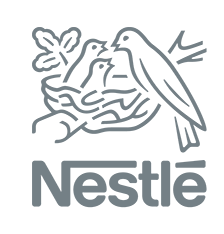 Nestlé cède ses petits pots pour bébé Natur à FNB - 06/02/2024
Nestlé cède ses petits pots pour bébé Natur à FNB - 06/02/2024
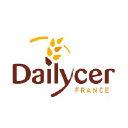 Céréales : Dailycer agrandit et automatise son usine - 25/10/2023
Céréales : Dailycer agrandit et automatise son usine - 25/10/2023
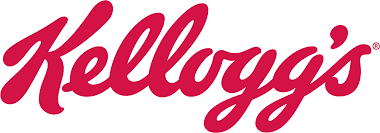 Kellogg's : 5 choses à savoir sur la scission du géant des céréales et des chips - 03/10/2023
Kellogg's : 5 choses à savoir sur la scission du géant des céréales et des chips - 03/10/2023

